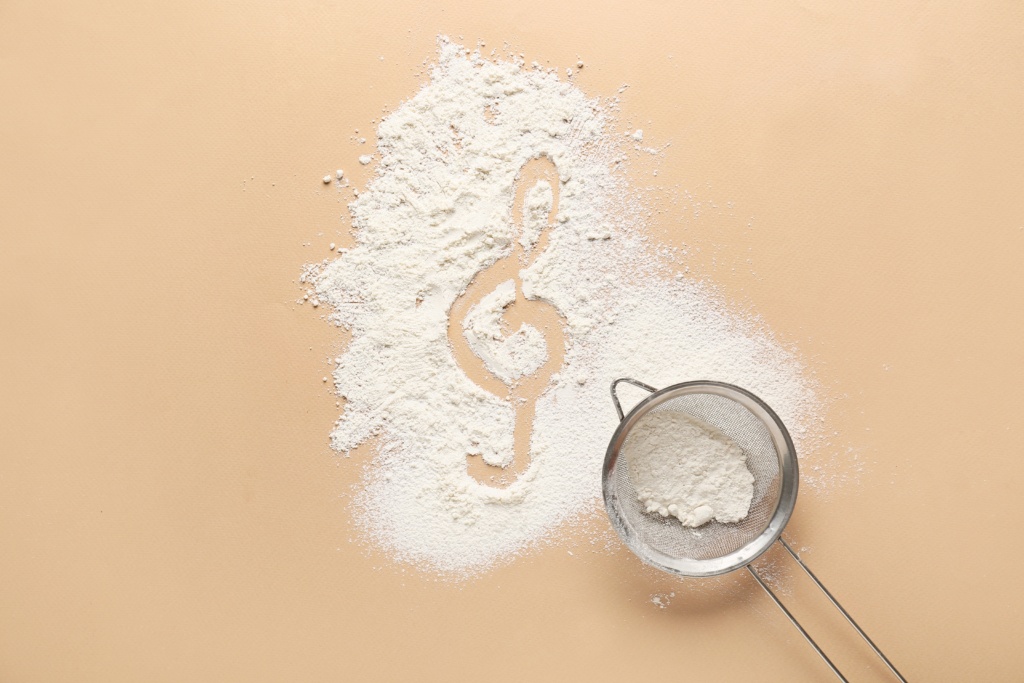
Creativity, to me, is all about constant exploration and discovery—finding inspiration in the unexpected, in the world around us, and in the people who push boundaries. As someone who lives in the heart of New York City, I’m surrounded by a never-ending flow of energy, innovation, and diverse influences. From the colors of street art that adorn every corner to the culinary artistry at some of the city’s best restaurants, the city itself is a living, breathing canvas. Music, too, has always been a deep passion of mine, influencing not only my personal life but also my understanding of creativity in every form. From the songs that evoke emotion to the live performances that create electric atmospheres, music fuels my sense of wonder and creativity just as much as the visual and culinary arts do.
Where Art and Food Meet
In my journey, I’ve found inspiration in many places—whether it’s the bold, thought-provoking work from some of my favorite artists like Peter Max, Kaws, and Banksy, or the transformative dishes created by chefs such as Thomas Keller, Kwame Onwuachi, and Grant Achatz. These individuals, in their own ways, inspire me to think beyond the conventional and embrace creativity that is not only unique but evolving. It’s this fusion of the immediate world around me and the desire to challenge the status quo that fuels my own creative thinking.
I’ve always believed that creativity is fluid. It’s not just about following a single path; it’s about blending influences, pushing boundaries, and constantly asking, “What if?” And when I look at these artists and chefs—people who continually redefine what’s possible—I see not just their work, but a reflection of that same curiosity, drive, and evolution that I find so exciting.
The Visionaries: Keller and Max
Take Thomas Keller, for example, a chef who meticulously crafts each dish as if it were a fine piece of art. Keller’s attention to detail, paired with his ability to elevate the simplest ingredients into something extraordinary, mirrors the work of Peter Max, whose bold use of color and geometric patterns injects energy into everything he creates. Both Keller and Max understand the power of precision and vibrancy—whether in flavor or color—to turn something ordinary into an unforgettable experience. They both prioritize emotional resonance in their work—Max with his vibrant colors that evoke joy, and Keller with his meticulous craftsmanship that inspires appreciation for the subtlety of taste. Both are masters of simplicity with precision, creating works that resonate deeply with the viewer or diner. Keller and Max show that creativity doesn’t have to be complex to be powerful; it’s about the emotion, the connection, and the experience that’s created through a thoughtful approach to the medium.
Cultural Innovators: Onwuachi and Kaws

Similarly, Kwame Onwuachi draws deeply from his cultural roots, infusing his culinary creations with the rich traditions of his heritage while blending them with modern techniques. This approach echoes the work of Kaws, an artist who bridges pop culture and fine art, combining street influences with high art to create a unique, playful aesthetic. Both Onwuachi and Kaws are innovators who use their backgrounds to shape new, exciting forms of expression, showing how creativity thrives when we mix the old with the new. For Onwuachi, his food is a celebration of his African, Caribbean, and Southern roots, yet it also speaks to a global audience, reinterpreting flavors in a contemporary context. Similarly, Kaws’ work takes street culture and transforms it, making it both nostalgic and fresh. Both artists and chefs celebrate and elevate their roots, using their cultural backgrounds as creative language to speak to new generations.
Surrealists: Humm and Dalí
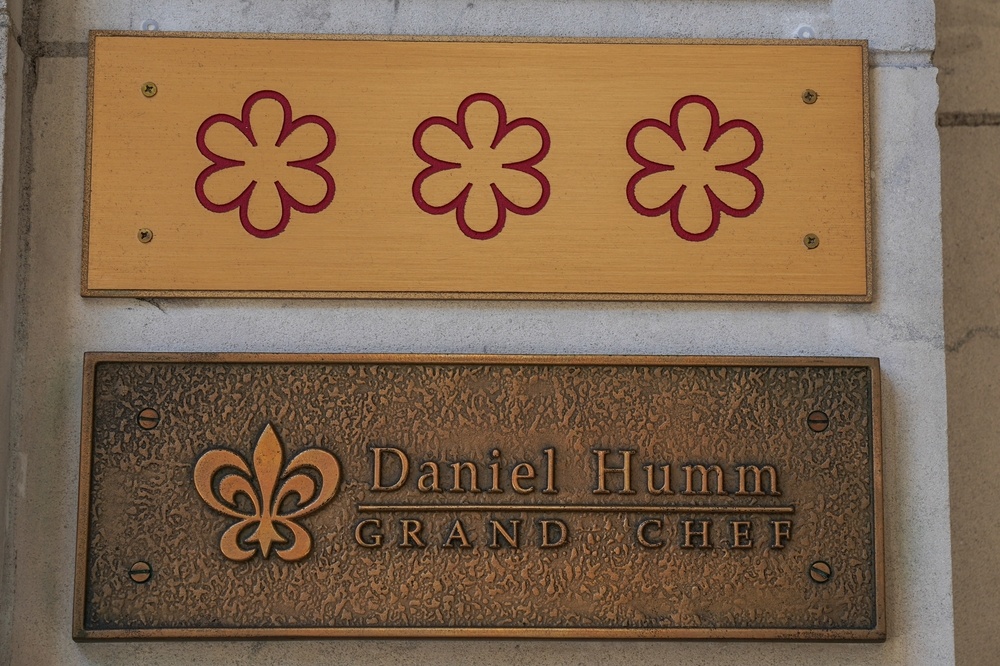
Then there are those who, like Daniel Humm, take the familiar and elevate it to new, surreal heights. Humm’s refined French cuisine, meticulously designed for ultimate sensory impact, calls to mind the work of Salvador Dalí, whose surreal landscapes invite viewers to explore beyond the limits of reality. Humm’s creations, like Dalí’s paintings, allow for wonder and discovery, transforming something familiar into a captivating experience.
Humm’s career is a testament to reinvention. After receiving three Michelin stars for Eleven Madison Park, Humm made the bold decision to close the restaurant for renovations—not just to update the space, but to reinvent the entire dining experience. He was not afraid to transform his approach, much like Dalí’s surrealism pushed the boundaries of the expected. Humm did it again when he reinvented himself by transitioning his restaurant to 100% plant-based cuisine, a move that shocked the culinary world and demonstrated his ability to evolve and adapt. Remarkably, Humm retained his three Michelin stars, proving that innovation, sustainability, and creativity can thrive together in the world of fine dining. Just as Dalí took familiar imagery and distorted it into something new and thought-provoking, Humm transforms sustainability and flavor into a culinary art form that invites diners to rethink their perceptions of both food and dining. Just as Dalí took familiar imagery and distorted it into something new and thought-provoking, Humm transforms sustainability and flavor into a culinary art form that invites diners to rethink their perceptions of both food and dining.
Both Humm and Dalí are masters of making the ordinary extraordinary—Humm elevates ingredients into transformative experiences, just as Dalí takes familiar objects and distorts them into something profound. Humm’s approach to food can be described as surreal in the way he creates sensory experiences that provoke thought, just as Dalí’s work challenges our perceptions and forces us to look at the world through a new lens. Their work, whether on the plate or the canvas, challenges us to think beyond the conventional.
Bold and Engaging: Achatz and Haring
And just as Grant Achatz uses molecular gastronomy to turn food into an interactive experience, Keith Haring used his art to engage the public in an energetic, accessible way. Both Achatz and Haring are bold in their approach, challenging the norms of their respective crafts and inviting audiences to interact with their creations in new and dynamic ways. Achatz’s dishes, like his famous edible menus or his use of liquid nitrogen, challenge diners to experience food in ways they never have before, engaging all the senses. Haring, too, engaged his audience by making his street art approachable—he used bold, simple lines to communicate big ideas, breaking down barriers between high and low art. Both creators use their platforms to invite engagement, encouraging us to actively participate in the experience—whether by eating or interacting with art. Their work is about breaking down barriers and creating spaces where we can explore and play, redefining how we experience art and food.
Playful Visionaries: Park and Invader
In a different yet equally captivating way, Junghyun ‘JP’ Park and Invader bring playful experimentation to their work. Park’s inventive twists on traditional Korean flavors show a deep curiosity and fearlessness, much like Invader’s pixelated art that transforms ordinary urban spaces into surprising masterpieces. Any 80s baby knows Invader’s work—his pixelated designs are a nod to the iconic Space Invaders game, which became a staple of pop culture during the 80s. His work brings that same playful, retro spirit into the streets, creating art that feels like a game in itself. Both push boundaries with unexpected combinations, making their work stand out through a unique blend of structure and imagination. Park’s dishes, like deconstructed kimchi, break away from tradition, showing that innovation thrives in the unexpected. Invader’s pixelated art transforms ordinary spaces into something new and interactive, much like how Park reimagines traditional flavors. Both create a new interactive experience, encouraging audiences to actively engage with their work. Their playful yet impactful approach shows how art and food can turn the familiar into something fresh and exciting.
Provocative Visionaries: Barber and Banksy
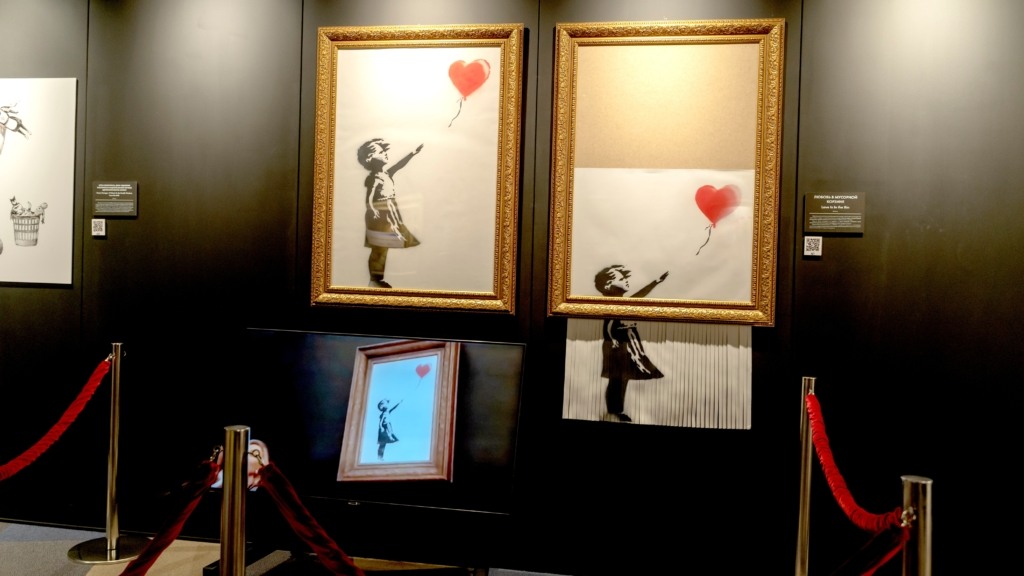
Finally, there are those who, like Dan Barber, provoke thought and question the norms of their field. Barber’s focus on sustainability in food and his commitment to using ingredients that are in harmony with the environment challenge us to rethink the way we approach cooking and consumption. This spirit of questioning the status quo resonates with the work of Banksy, an artist who uses street art as a vehicle to challenge societal norms and provoke deep reflection on the world around us. Both Barber and Banksy invite us to engage critically with their work, encouraging us to rethink not just what we consume, but how we consume it.
Barber, through his culinary philosophy, and Banksy, through his subversive art, use their platforms to spark conversations about the systems we participate in and the impact they have on the world. Barber’s approach to sustainable food is as much about social change as it is about cuisine, just as Banksy’s art aims to question and disrupt societal expectations. Both take a stand on important issues and challenge us to be more conscious of our choices, whether it’s the food we eat or the world we live in.
Harmonizing Art, Food and Sound
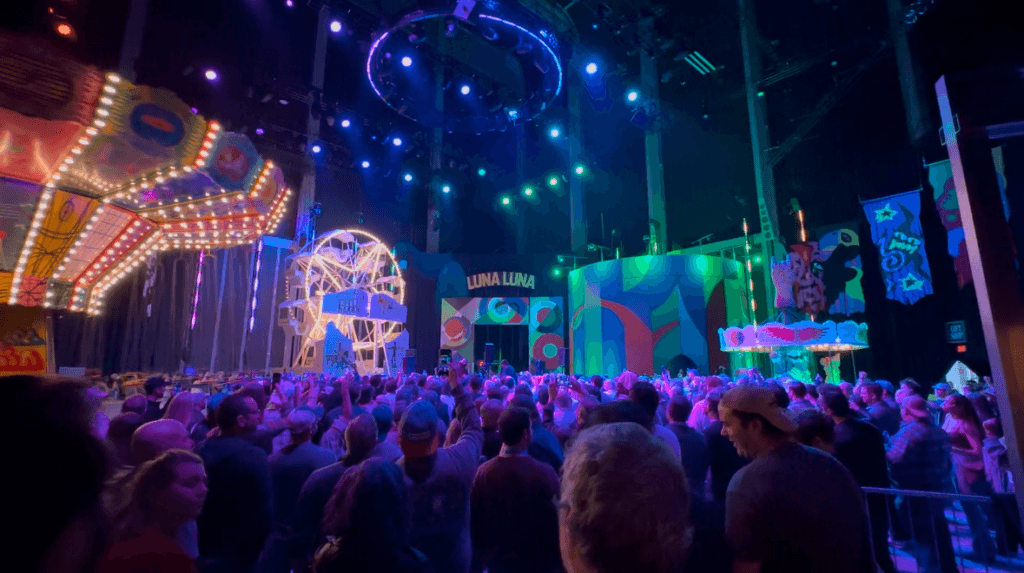
Creativity, like art itself, is ever-evolving. A few weeks ago, my best friend, her six-year-old, and I ventured to the Luna Luna: Forgotten Fantasy exhibit for one of our “Adventure Days.” Knowing little about the exhibit but curious to explore, we were immediately immersed in a world where imagination was brought to life. Luna Luna, originally a groundbreaking art amusement park in the 1980s, brought together renowned artists like Roy Lichtenstein, Salvador Dali, Keith Haring and Jean-Michel Basquiat with carnival rides and performances to create an interactive, whimsical world of creativity. It felt like a living artwork, where each step deeper into the exhibit revealed more about how creative vision can transform and evolve.
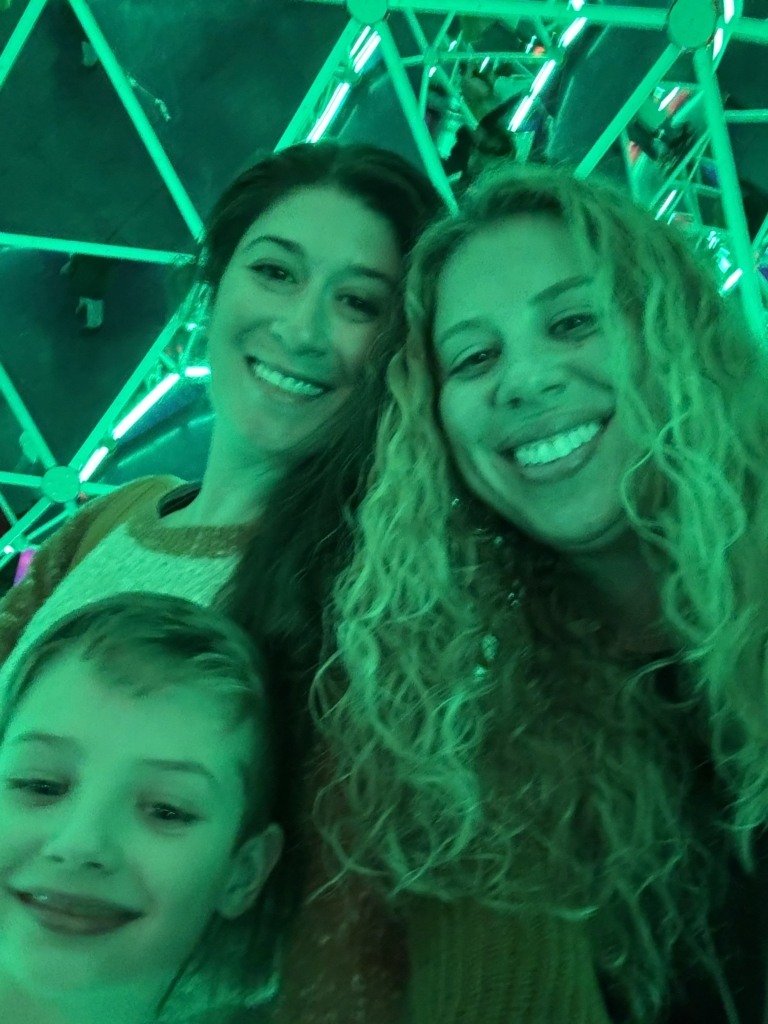
This concept of creativity that reimagines and reinterprets the past to shape something entirely new reminded me of my experience at the Luna Luna exhibit. Then, last night, I had the privilege of attending a performance by one of my favorite bands, Goose, at the same Luna Luna exhibit. The event, called “Everything Must Go,” was part of their promotion for a new album yet to be released. I knew it wouldn’t be the typical three-hour concert I was used to; instead, it was a fresh interpretation of their artistry, a new phase in their evolution. The venue and the music were a perfect match—a mix of creative forces that pushed the boundaries of what I expected from both the space and the band.
The experience was made even more dynamic by the way the band embraced the immersive nature of the exhibit. The musicians dressed up as the characters and creatures that roamed the immersive space, walking through the crowd incognito before taking the stage. This unexpected touch added yet another layer of creativity, as the line between artist and audience blurred, making the performance feel like part of the exhibit itself. It wasn’t just a concert; it was a fully immersive artistic experience, where the music, the environment, and even the performers became one.
What struck me was how the original artists of Luna Luna, many of whom were outcasts in their time, sought to create something beautifully interactive and inclusive, a celebration of imagination and a departure from the norm. In a way, this is exactly what Goose did that night—interpreting their past, acknowledging where they came from, and yet pushing forward in a new direction. They even chose to purchase thrifted shirts, upcycling them before screen printing their show image over the fabric. This small act of creativity highlights how art and music, much like food, can be a process of recreating and reimagining the past to make something new and exciting. Goose, sharing a semblance to those outcast artists also provokes a counterculture movement, while embracing creativity through sustainability and rebellion against mainstream conventions, adding another layer to their artistry. This continual evolution of creativity, whether through music, art, or food, is what keeps these experiences alive and relevant.
Just like a chef crafting the perfect dish, artists—whether in food, visual art, or music—combine elements from the past and present, pushing the boundaries of their medium. The creativity behind every dish, every painting, and every performance invites us to rethink what we know and inspires us to look at the world in new ways. It’s this blending of tradition and innovation, of play and purpose, that makes both food and art such powerful tools for expression. The experience I had with my best friend and her son at Luna Luna is a perfect example of how these forms of creativity not only transform the individual across generations but also create a shared experience, a sense of community. Like the chefs I admire—Keller, Achatz, Onwuachi—and the artists who redefined their craft, Goose included, it’s about pushing forward, adapting, and continuously creating something that leaves a lasting impact. The music, the art, and the food come together to build a space where creativity thrives and connects us all, inviting us to rethink our perceptions and feel a sense of belonging in the process.
Keepin’ it spicy,
